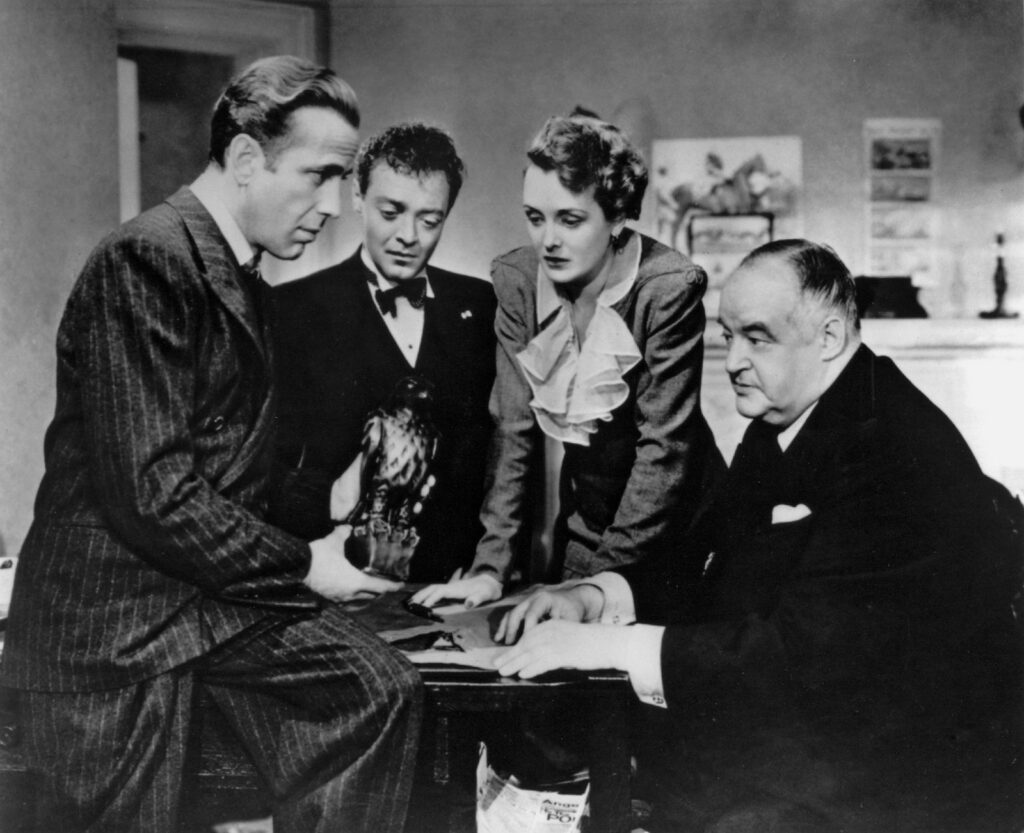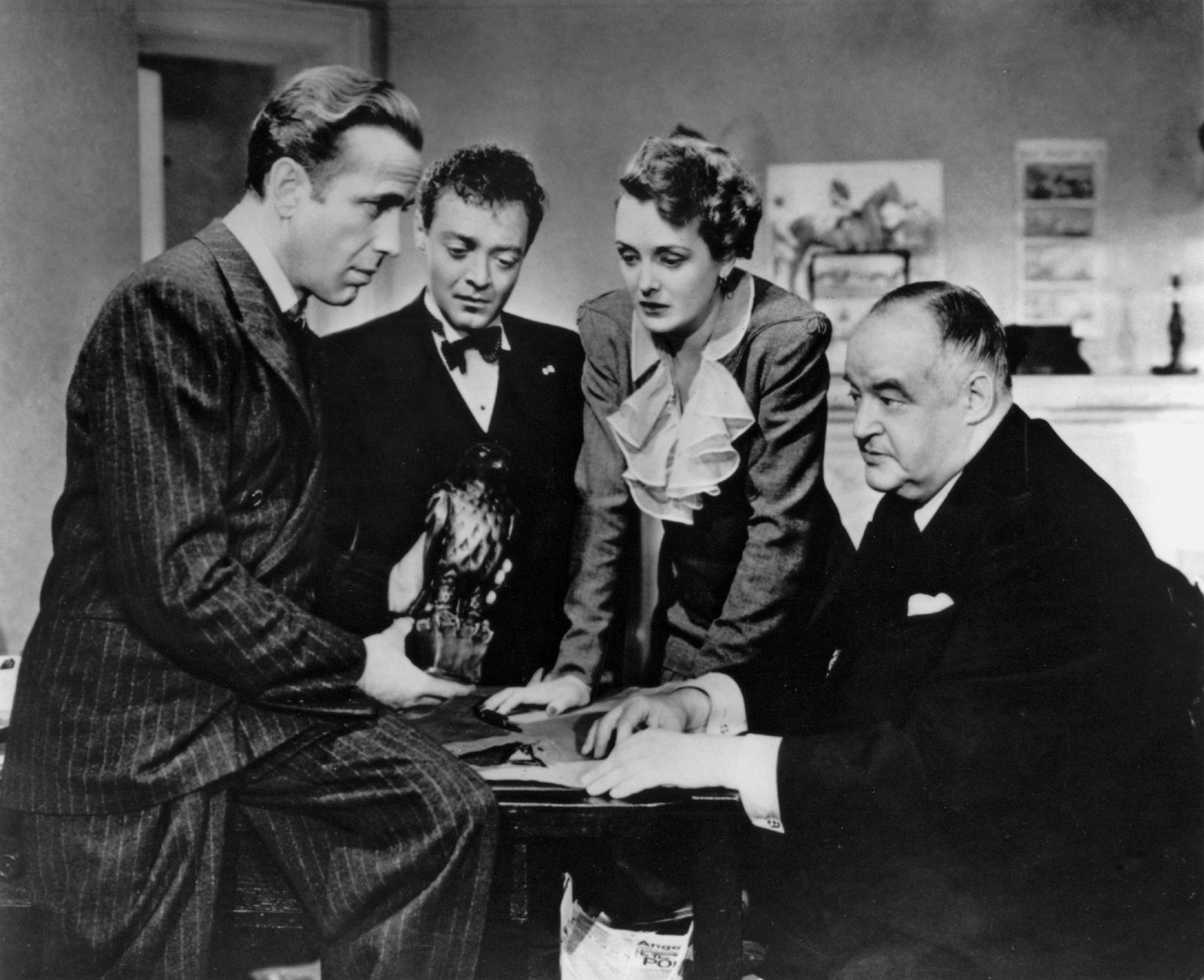
Today, we look at the origin of the term “MacGuffin.”
In Pop Culture Questions Answered, I answer whatever questions you folks might have about movies, TV, music or whatever (feel free to e-mail questions to me at brian@pop culture references.com).
Luckily, over the years, I’ve had plenty of folks send me questions at Legends Revealed that didn’t really work as legends, per se, but are perfect for this, and one such question came from reader Frank W., who wanted to know the origins of the term, McGuffin, which is used in all sorts of popular fiction nowadays, but is best known as a movie term.
A MacGuffin (or McGuffin, people use the two pretty much interchangeably) is a term for the ostensible driving force of a story but really exists just to be what drives the story. In other words, they are not meant to be examined too closely. Probably the most famous example (and a perfect example of how the concept obviously predated the coining of the term) is the titular Maltese Falcon of The Maltese Falcon, the 1930 novel by Dashiell Hammett that was adapted into film right away in 1931 but then most famously in 1941, with Humphrey Bogart as Private Investigator Sam Spade.
In the story, people are murdering each other trying to get a hold of a statue known as the Maltese Falcon, but when everything shakes out and multiple people are dead, it turns out that the statue is a fake.

That isn’t to say that MacGuffins have to be nonsense, it is more that their main existence is to drive the plot. However, when the term was coined, it really was meant to describe the plot device as, effectively, nothing.
Film director Alfred Hitchcock popularized the term. Here is his explanation of it in the 1967 book Hitchcock:
The main thing I’ve learned over the years is that the MacGuffin is nothing. I’m convinced of this, but I find it very difficult to prove it to others. My best MacGuffin, and by that I mean emptiest, the most nonexistent, and the most absurd, is the one we used in North by Northwest. The picture is about espionage, and the only question that’s raised in the story is to find out what the spies are after. Well, during the scene at the Chicago airport, the Central Intelligence man explains the whole situation to Cary Grant, and Grant, referring to the James Mason character, asks, ‘What does he do?’ The counterintelligence man replies, “Let’s just say that he’s an importer and exporter.” “But what does he sell” “Oh, just government secrets!” is the answer. Here you see the MacGuffin has been boiled down to its purest expression: nothing at all!
The term was coined by Angus MacPhail, a Scottish writer who worked writing dialogue for silent films before becoming a “scenario generator” himself with had worked with Hitchcock on a number of films. Hitchcock loved the term. He used a story that MacPhail had told him to explain the idea:
Two Scottish men are riding on a train when one man asks the other about the contents of a package on the overhead luggage rack.
“It’s a MacGuffin,” says the first man, “a device for hunting tigers in Scotland.”
“But there are no tigers in Scotland,” replies the second man.
“Well then, it’s not a MacGuffin,” says the first.
A great description of the term came in a New York Times Magazine article about Sir Alec Guinness, describing him as, “perennially on the scent of the McGuffin, the bit of magic that lifts a piece out of the common ruck.”
I like that, it is the plot device that gets the story going, that lifts someone’s story into an adventure worth putting to film.
Thanks for the question, Frank!
If anyone else has a pop culture question, drop me a line at brian@popculturereferences.com









